System Preferences in macOS, Sierra: Parental Controls

eXtensions - Wednesday 19 October 2016
|
System Preferences in macOS, Sierra: Parental Controls |
 |
|
|
By Graham K. Rogers
As well as the ability to prevent use of certain applications, limits may be set to: URLs - both specifics and types of sites (including online multiplayer games) - and other forms of access. Logs of activities can be monitored. There is also the ability to limit the number of hours that an account is used, including beginning and end times. This may help families with those addicted to playing games non-stop. Research suggests that limiting the number of hours each day a young person can access a computer is beneficial (Shields and Behrman, Princeton).
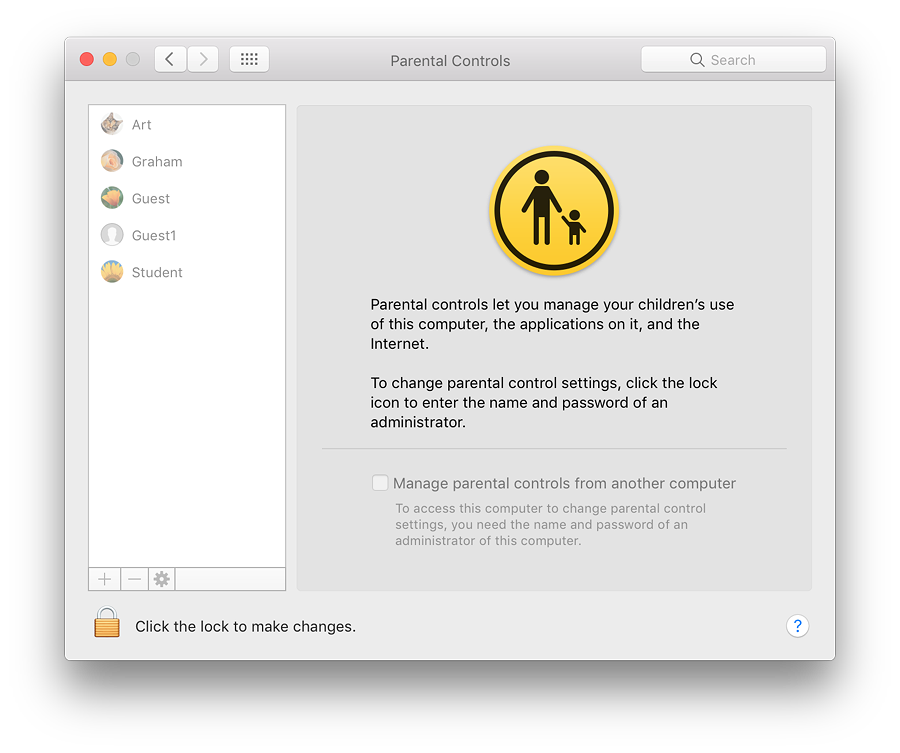
When an account is selected, the controls can be activated. The panel then displays 6 tabs: Apps, Web, Stores, Time, Privacy and Other. It is also possible to create a new (controlled) user account directly from within the panel with the + icon under the users list This will add (create) a new account. A simple panel appears asking for Username, Account name and Password (plus Verify) and a password hint. At the top of the panel is an Age button, with options of 4+, 9+, 12+ and 17+. An account is created and the Parental Controls panel appears. The - (delete) will offer to delete a highlighted account. This is not to turn off Parental Controls. If an active account is deleted, the system offers to save the Home folder as a disk image in the same way as deleting an account in Users & Groups. This delete feature should be used carefully. The gear icon reveals a menu with shortcuts for actions: settings for one account can be copied and pasted to another; parental controls may be turned off for any specific account; and Allow Remote Setup may also be activated here.
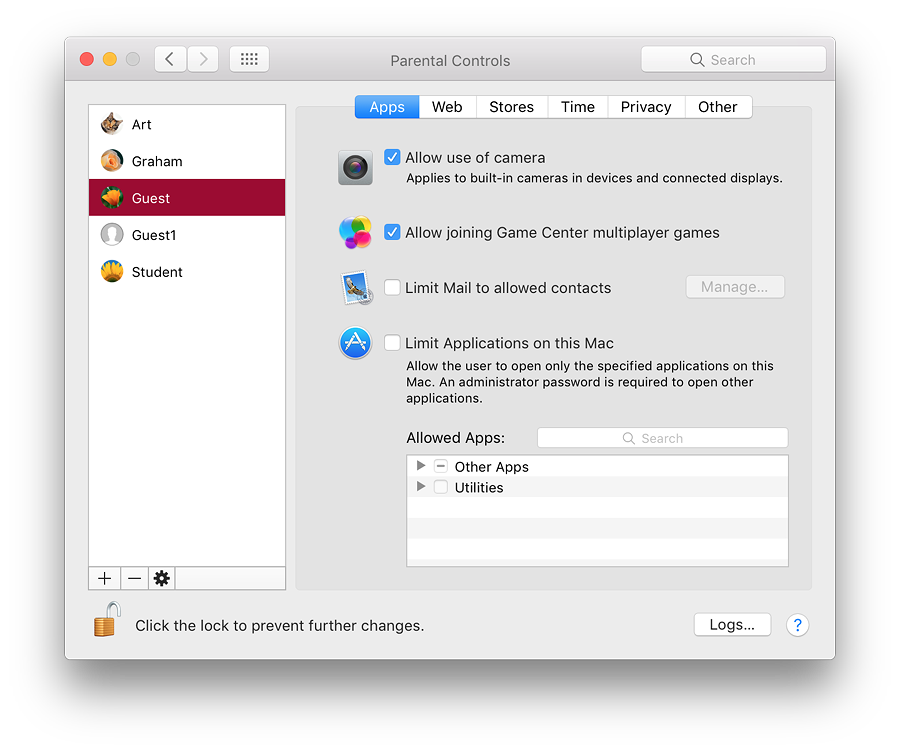
AppsWhen a new account is created in this panel, or when applying Parental Controls to an account that has already been created, the first tab (Apps) controls the applications and access to other features. It is in two sections and has been redesigned.The upper part of the panel displays 4 checkboxes
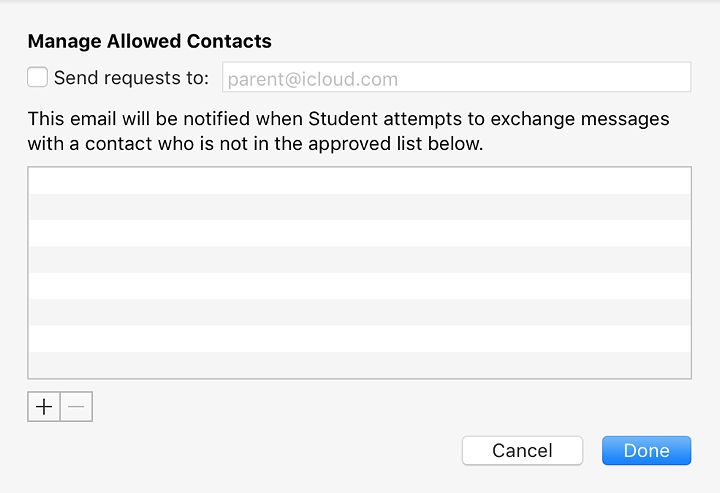
WebThe "Web" section limits a user's access to the World Wide Web. This pane has seen a minor redesign. There are three radio buttons:
The second option - for controlling limited access - tries to use recognized content filters. A Customize button reveals a two-section panel that allows the parent to specify sites that may be accessed: Always allow these websites; and Never allow these websites.
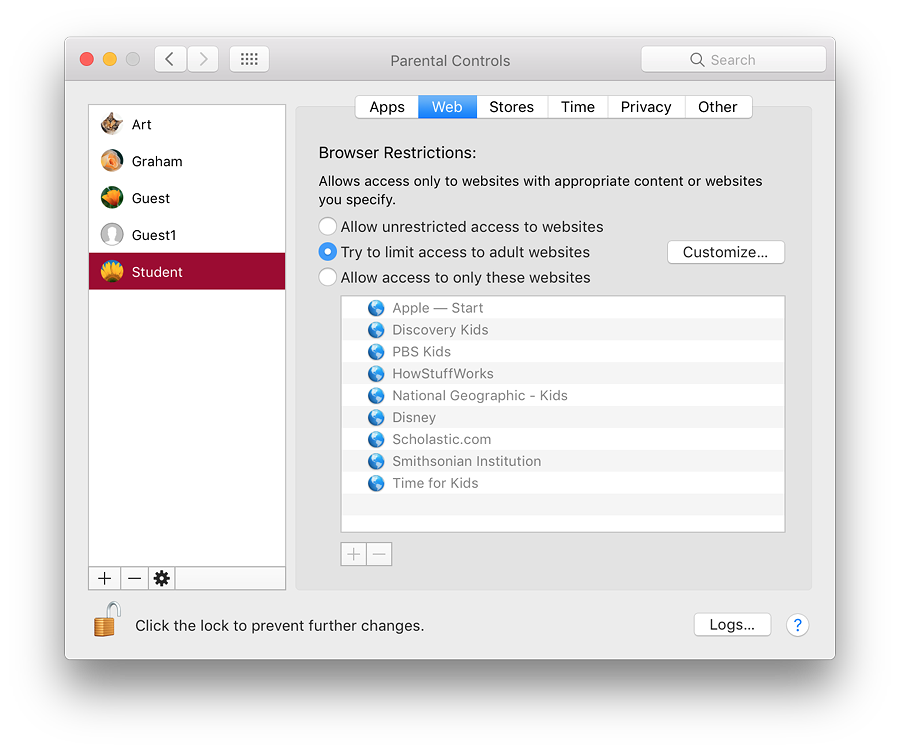
At the bottom of the panel are + and - icons so that parents may add suitable bookmarks or folders. Any sites on the list may be removed.
StoresThe tab marked Stores is a new addition. It controls access to online stores and limits access to purchasing opportunities. At the top is a section marked Disable. The options here are iTunes Store (with a sub-item of iTunes U) and iBook Store. This appears to be in response to problems when children have built up excessive charges in their parents' accountsA second option, marked Restrict, has five checkboxes: Note: the age groups cited for viewing restrictions of Movies, as well as TV, on my computer are specific for the Thai market. These will differ from country to country.
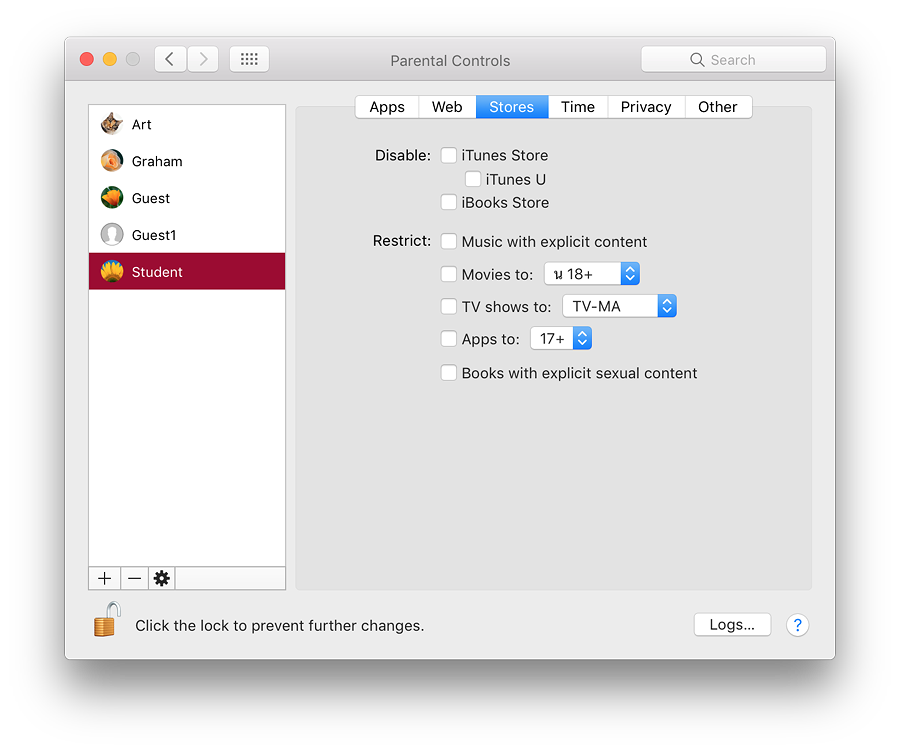
TimeAs in earlier versions of Parental Controls, there are three sections to the Time panel: Weekday time limits, Weekend time limits, and Bedtime.
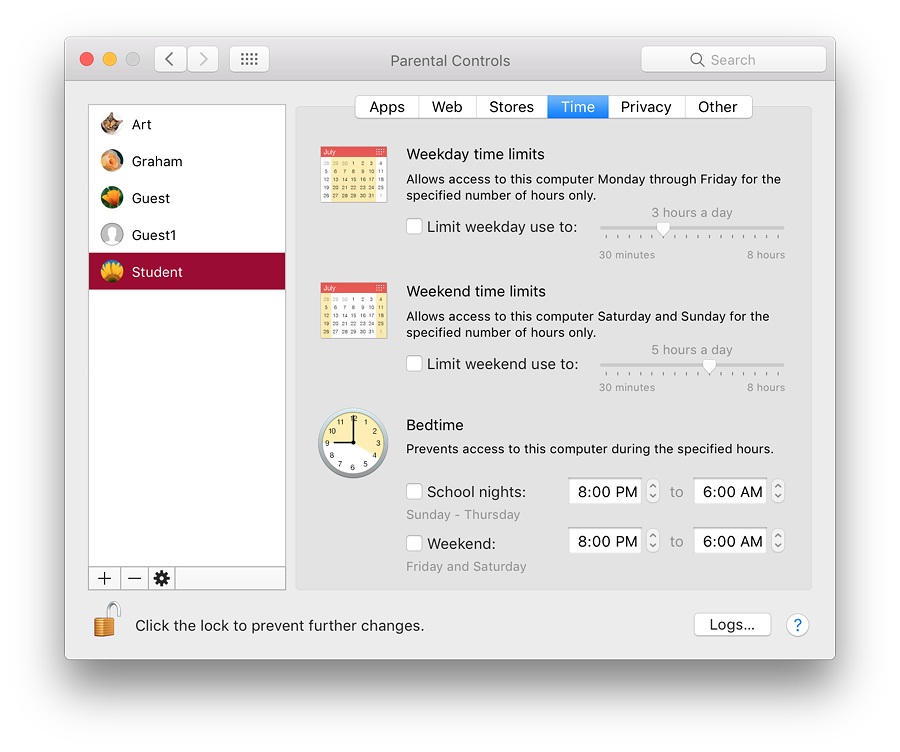
As before, this section does not take into account that some cultures do not have a Saturday/Sunday weekend.
PrivacyThe tab marked Privacy is new and controls what access is given to the user's data from outside. The panel is in two sections, with the first limiting the access that others may have to "Student's data". Below the text explanation, this section has a single button that links to the Privacy section of Security & Privacy preferences.
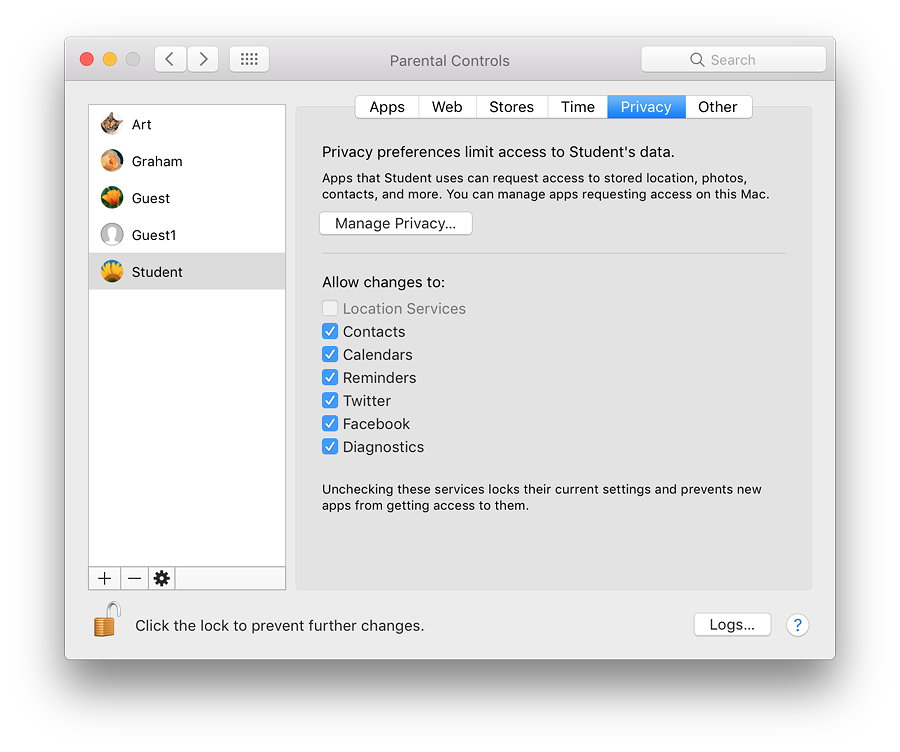
OtherThe final pane in Parental Controls now has 6 checkboxes to control access to specific features or functions. Some items have been removed. Others have been added. Wording of those previously available has been changed.

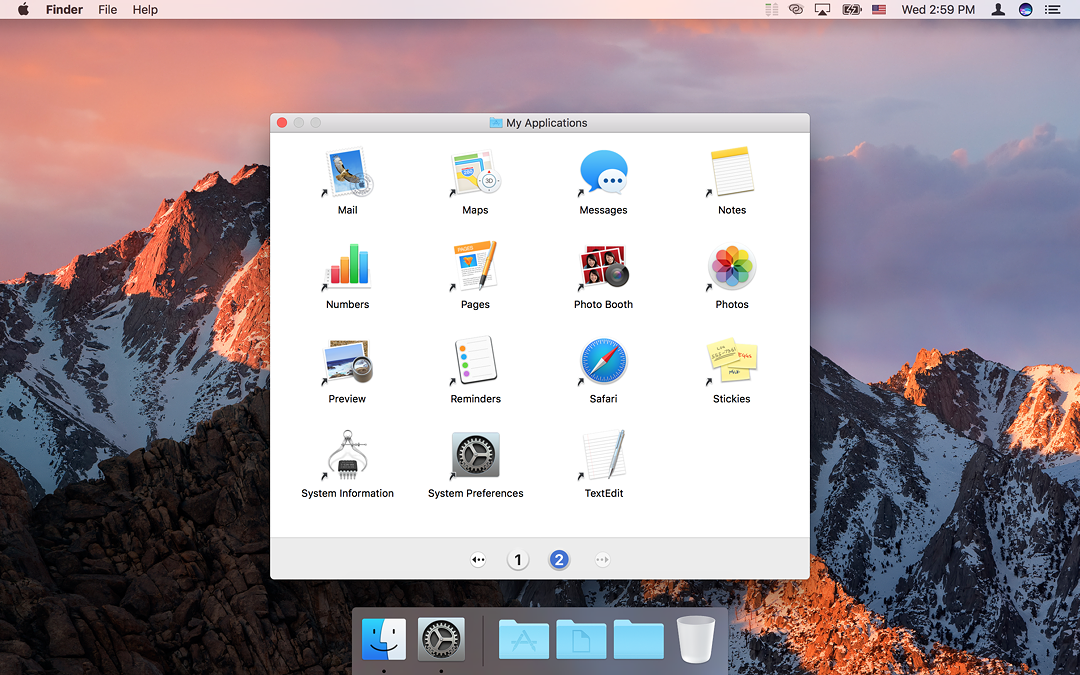
Simple Finder in a Protected Account
LogsA logs button is available at bottom right of all panels. Pressing the button reveals a redesigned panel which has two tabs: Applications and Web. Above these is a button to select the time (history) that is to be checked. Options here are: Today, One Week, One Month, Three Months (default), Six Months, One year, and All.The Applications panel is in two parts: a pie-chart to the left, and a list of applications (with colors that correspond to those in the chart). Beside each list item is an access triangle which opens to show information about when the application was used and for how long.
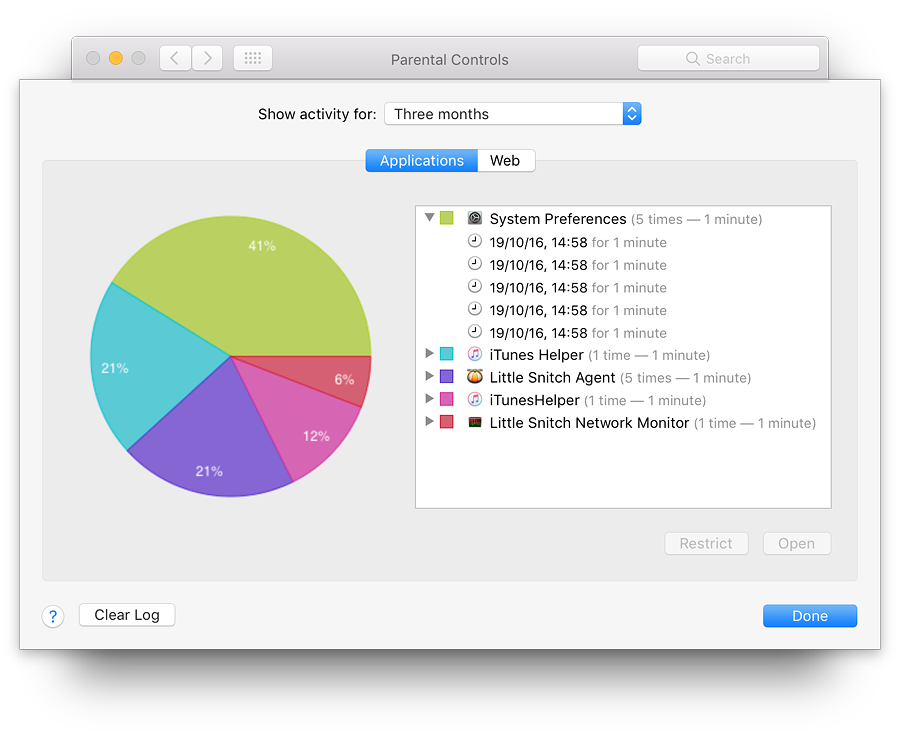
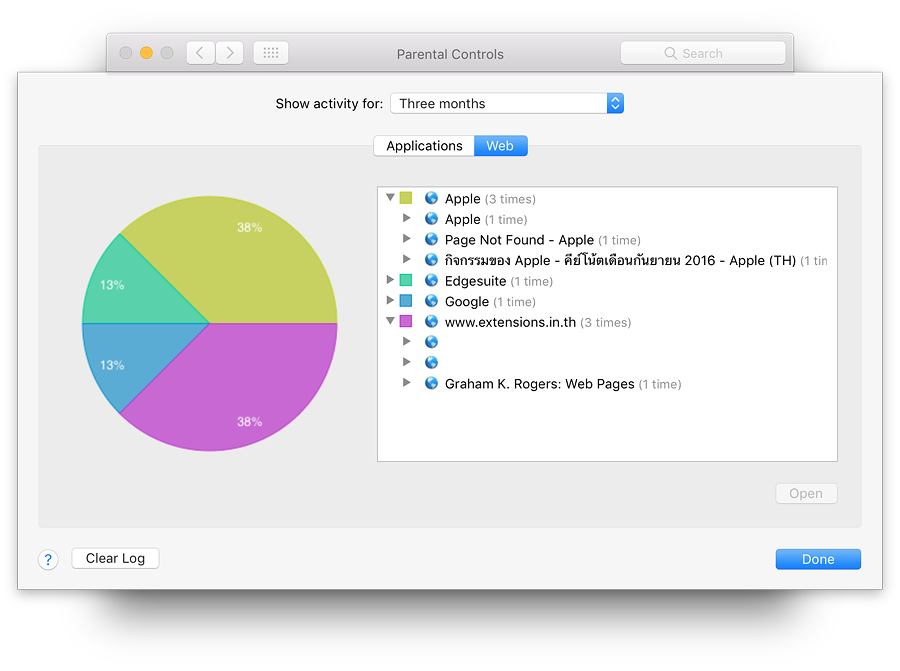
CommentsRecently Lori Gil on iMore wrote a lengthy article on the use of Parental Controls on Macs. Readers might also want to have a look at her explanation of this part of System Preferences.
We are reminded of the Peter Steiner cartoon from New Yorker, "On the Internet nobody knows you're a dog." There have been other, more recent reminders (such as the movie, Trust) of how at risk young people can be, as well as many real-life reports, although recent revelations suggest users may have more to fear from certain governments. While parents should work with the very young in their online discoveries, those who are older value their independence and privacy. They can feel inhibited and resentful if they sense that they are under observation. Parents have to perform a balancing act between that freedom and the protection needed. The big bad wolf is real.
See Also:
Graham K. Rogers teaches at the Faculty of Engineering, Mahidol University in Thailand. He wrote in the Bangkok Post, Database supplement on IT subjects. For the last seven years of Database he wrote a column on Apple and Macs. He is now continuing that in the Bangkok Post supplement, Life. He can be followed on Twitter (@extensions_th) |
|

For further information, e-mail to

|